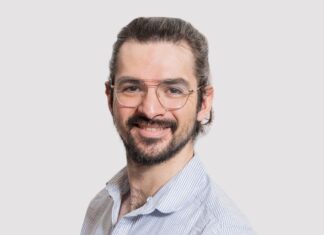The startup scene in Warsaw has become a significant economic factor in Poland in recent years. The city hosts a growing number of innovative companies focusing on a wide range of industries.
Some of the emerging industries in Warsaw include e-commerce, fintech, IT, and SaaS (Software-as-a-Service). These areas have experienced rapid growth in recent years and attract investors from around the world.
The city is also known for its startup ecosystem. There are many coworking spaces, accelerator programs, venture capital funds, and incubators that support young companies in developing and scaling their ideas.
The local government and organizations such as the Warsaw Business Hub work closely with startups to strengthen Warsaw’s economic location. The universities in the city also play an important role in promoting innovation and entrepreneurship.
Overall, the startup scene in Warsaw is very active and promising. The growth potential is significant, and there are many opportunities for investors and entrepreneurs to benefit from the city’s growing dynamism.
Ramp: Ramp is a startup company focused on developing a decentralized blockchain infrastructure. The goal of Ramp is to provide a cost-effective, fast, and secure way to enable the exchange of cryptocurrencies. Ramp’s platform allows users to seamlessly and securely conduct transactions in various cryptocurrencies without relying on third-party providers. In addition, Ramp also offers solutions for integrating blockchain technology into existing businesses and applications. Ramp aims to create an open and inclusive blockchain infrastructure that anyone can use.
Packhelp: Packhelp is a startup company specializing in the production and sale of customizable packaging. The company offers an online platform where customers can design and order their own packaging. The packaging is made in a variety of sizes and materials and can be personalized with logos, graphics, and text. Packhelp’s goal is to provide small and medium-sized businesses with a cost-effective way to professionally showcase their products and strengthen their brand identity.
Yosh.Ai: Yosh.AI is a startup company specializing in the development of artificial intelligence and machine learning. The company uses these technologies to create intelligent virtual assistants that simplify and improve users’ lives. These virtual assistants can be used in various areas such as customer service, healthcare, or retail. Yosh.AI’s goal is to make the interaction between humans and machines more intuitive and effective.
DocPlanner: DocPlanner is an online platform that allows users to find medical professionals and healthcare providers near them and schedule appointments online. The company was founded in 2012 and is headquartered in Warsaw, Poland. DocPlanner operates in over 15 countries worldwide and has a user base of millions of people who use its services to schedule quick and easy doctor appointments.
Addepto AI is a startup company specializing in artificial intelligence and machine learning. The company develops customized AI solutions for businesses and organizations to help them automate business processes and optimize decision-making. Addepto AI works with various industries such as finance, healthcare, retail, and energy, and offers solutions such as predictive analytics, natural language processing, and computer vision.
ReSpo.Vision is a European deep tech startup based in Warsaw that aims to revolutionize the sports and betting industry through the use of computer vision and artificial intelligence. Using advanced AI research, the company is able to observe and analyze football games. Computer vision and machine learning algorithms create immersive VR and AR visualizations to integrate sports fans into the game. 3D sports tracking data improves sports analysis and visualizes the game. ReSpo.Vision relies on innovative technologies to create a new level of sports experience and revolutionize the sports industry.
DoxyChain is a startup that specializes in developing a secure and improved document management solution for Web3. The company uses blockchain technology and smart contracts to create a reliable infrastructure for document storage and management. DoxyChain offers APIs for large enterprise applications and other blockchains, making it an important player in the increasingly digitized world of document management.
Authologic is a startup company specializing in providing secure authentication and identity management solutions. The company uses advanced technology such as machine learning and artificial intelligence to verify the identity of users and ensure the security of applications and systems. Authologic offers a variety of solutions, including multi-factor authentication, identity and access management, and password management tools. The company’s platform is easy to implement and use and is suitable for businesses of any size and industry.
Vodeno is a fintech startup that specializes in providing cloud-based banking and payment services. The company offers a range of solutions, including digital banking platforms, payment processing, e-wallets, and API integrations. Vodeno’s products and services aim to help financial institutions and businesses offer digital financial services quickly and cost-effectively, thereby improving the customer experience.
Tylko is a Polish startup that specializes in producing custom-designed shelves. Customers can customize their shelves to their needs using an easy-to-use online platform by choosing size, color, and material. Tylko uses high-quality materials and state-of-the-art technology to ensure that each shelf is perfectly tailored and of the highest quality. The company aims to revolutionize the furniture industry by providing customer-oriented solutions and a seamless online experience.
inSTREAMLY is a startup that allows streamers on Twitch and YouTube to monetize their streams with relevant advertising content. The platform uses artificial intelligence to analyze the viewers of streamers and present them with personalized ads. This allows streamers to generate additional revenue on inSTREAMLY while allowing advertisers to target their audiences effectively.
Foto/Quelle: stock.adobe.com – f11photo















